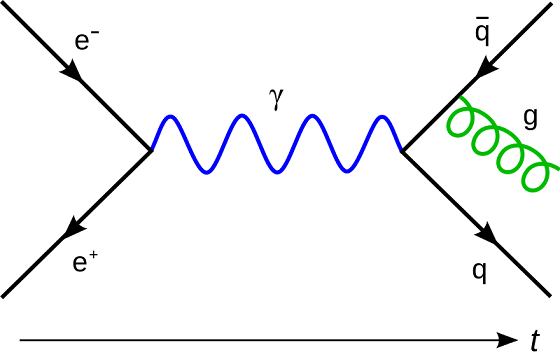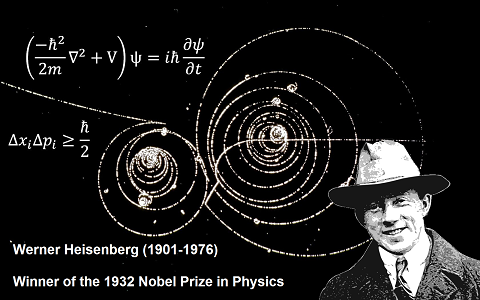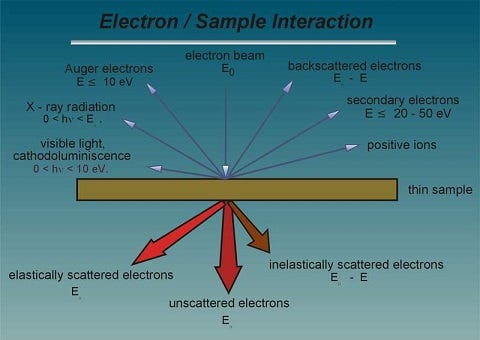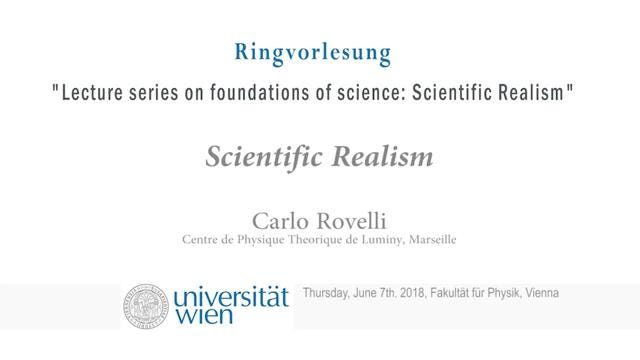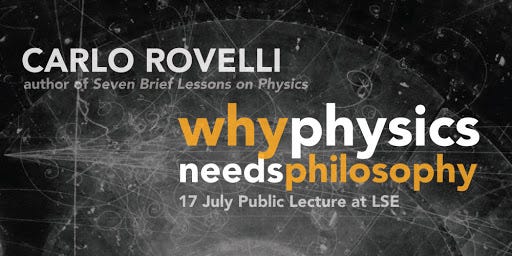Mathematical
structuralism is a theory in the philosophy of mathematics which
argues that mathematical objects are defined solely
by their place in mathematical structures.
Mathematical
structuralism adopts a position that's common to most other
philosophical structuralisms in that it denies that there are any “intrinsic properties” of objects.
It even denies the very existence of objects apart from structures.
This
means that we don't have objects (or things): we only have structures
and relations. In terms of mathematical structuralism only: we don't
have numbers until we also have structures and relations. In other
words, numbers are born of their structures and relations.
Mathematical
structuralism has been dated back to David Hilbert’s The
Foundations of Geometry
of 1899. In that work
Hilbert
states:
“We
think of . . . points, straight lines, and planes as having certain
mutual relations, which we indicate by means of such words as 'are
situated', 'between', 'parallel', 'congruent', 'continuous', etc.
The complete and exact description of these relations follows as a
consequence of the axioms of geometry.”
Here
it can be seem that mathematical objects gain their identity relative to their “relations” to other things. Thus “points,
straight lines, and planes” are defined by relational terms such as
“between”, “parallel,” “congruent,” and “continuous”.
This entire package then takes the form of a structure (or a system).
Thus the points, straight lines and planes have relations of
betweenness, congruence and being parallel to
other things by virtue of being part of a whole structure (or system)
in which these relations can occur.
Hilbert
was even more explicit about his own (proto)structuralism in
the following
correspondence with Gottlob Frege
(as quoted by Stewart Shapiro):
“Every
theory is only a scaffolding or schema of concepts together with
their necessary relations to one another, and that the basic elements
can be thought of in any way one likes. If in speaking of my points,
I think of some system of things, e.g., the system love, law,
chimney-sweep . . . and then assume all my axioms as relations
between these things, then my propositions, e.g., Pythagoras’
theorem, are also valid for these things . . . [A]ny theory can
always be applied to infinitely many systems of basic elements.”
In
terms of Paul Benacerraf's initial reasons for formulating
mathematical structuralism.
Benacerraf
firstly noted that algebraic
theorists
had no position on the ontology of mathematical objects. Such
theorists were only concerned with their “structure”. Thus
Benacerraf asked himself whether or not what is true of algebraic
theories is also true of other mathematical theories.
As for mathematical structuralism itself, Hartry
Field puts the mathematical structuralist position very clearly
in the following:
“The
core idea – which I'll call the
structuralist insight
– is that it makes no difference what the objects of a given
mathematical theory are, as long as they stand in the right relations
to one another.”
Clearly
it's the case that in the passage above objects are
played
down
and structures are played up. We can gain some purchase on what a
structure is by talking about the “relations” (or the “right
relations”) which “objects” need to have “to one another”.
However, two obvious points need to be stated here:
i)
It is objects which have these relations to one another.
ii)
It is objects which are part of a structure.
These
points will be tackled later. For now, let Benacerraf give a more
detailed account of mathematical structuralism. He does so
in
the following:
“For
arithmetical purposes the properties of numbers which do not stem
from the relations they bear to one another in virtue of being
arranged in a progression are of no consequence whatsoever. But it
would be only these properties that would single out a number as this
object or that.”
In
simple terms, we can say that the number 1 is (partly) defined by being the
successor of 0 in the structure determined by the/a theory of natural
numbers. In turn, all other numbers are defined by their respective
places in the number line.
(See more detail on this later.)
It's
worth noting here that “objective
truth”
(or at least truth)
isn't rejected or denied by mathematical structuralists: it's just
the account of how that truth comes about which is different to other accounts. Put simply, mathematical objects don't
bring about objective truth: abstract structures do. Another way of
putting this is to say that nothing is said about any mathematical
object other than its place in a structure. Thus it seems to follow
that there is no ontology of mathematical objects offered by
mathematical structuralists.
Do
Structures Give Birth to Numbers?
According
to Benacerraf, the “structure” of a “particular sequence”
provides the meat (as it were) of a number. Or, in an alternative
phraseology, the structure (or the set of all similar structures)
actually gives birth to the number. Firstly we have the structure,
and only then do we have the number. We don't, in other words,
firstly place a number within a structure because that would mean
that the number already exists. Instead, the structure brings forth
the number. What is important is the abstract structure, not the
abstract object.
The
idea that numbers are given birth to by structures is shown in
the following passage:
“Only
when we are considering a particular sequence as being, not the
numbers, but of
the structure of the numbers,
does the question of which element is, or rather corresponds
to,
begin to make any sense.”
So
firstly we have the structures. And then we have numbers as
“elements” of these structures. But what can we make of these
abstract structures before they have their elements or numbers? What
do they “look” like in their naked form? To use a term and
question from Quine (though he was referring to abstract
propositions): what are the “identity
conditions” of
these abstract structures?
Again,
how can we make sense of an abstract structure (or even of a
“particular sequence”) without numbers (or at least without
something)
other than the abstract structure itself? In
this case, Benacerraf's abstract structures appear to be like the bare substratums of certain ontologists or even like Kant's well-known
noumena.
Of
course others (including Benacerraf himself) have noted the
problem with accepting abstract structures though not accepting
abstract mathematical objects. The obvious problem is this:
If
we can't gain epistemological access (whether causal or otherwise) to
abstract numbers, then how can we gain access to abstract
structures?
Thus,
to repeat, Benacerraf's position is that he wants to get rid of
abstract mathematical objects; though he's happy with abstract structures. Thus that means that abstractions (in and of themselves)
aren't the problem. Take
this
passage:
“Arithmetic
is therefore the science that elaborates the abstract structure that
all progressions have in common merely in virtue of being
progressions.”
Thus
if Benacerraf was attempting to get rid of numbers as abstract
entities, then why didn't he also have a problem with “abstract structure”? Some or all of the questions asked about abstract (or
Platonist) objects can now be asked about abstract structures. Indeed
“progressions” themselves are also an abstraction.
In
addition, if you take away the numbers from these abstract
structures, what is left? Just a pure or naked abstract structure? But
what is that? It's surely numbers that gives some kind of shape or
reality to abstract structures or progressions. Indeed it's hard to
even conceive what these structures could be without numbers or other
mathematical objects (such as lines and planes in geometry, elements and operations in abstract algebra,
etc.).
Types
of Mathematical Structuralism
Prima
facie,
one may ask whether or not mathematical structuralists deny the
existence of mathematical objects entirely or simply have a unique
position on them.
One
thing structuralists do share is that mathematical objects are
“incomplete” in that only the structures they belong to
make them complete.
(Objects fill in the dots provided by structures.) However, an incomplete object is still an object
of a sort.
Such
objects are also said to lack “intrinsic properties”. So now we
ask the following question:
Can
an object with no intrinsic properties be an object at all?
(The
denial of intrinsic properties in ontic structural realism, for
example, does lead to the denial of objects/things
themselves.)
Having
said all that, certain brands of structuralism do endorse abstract mathematical objects of various kinds - not only structures. (Indeed
it's hard to even imagine maths without abstract objects of some
kind.) Some mathematical structuralist positions can even be deemed
to be examples of Platonism.
Platonist
Structuralism
Mathematical
realists (or Platonists) believe that abstract mathematical objects
exist independently of the mind. They also deem them to be eternal
and incapable of change. (Of course this isn't to say that there's
only an either/or situation when it comes to the philosophy of
mathematics: i.e., either mathematical realism or mathematical
structuralism.)
On
the surface, mathematical structuralism appears to be radically at
odds with Platonist (or realist) conceptions of numbers. That is
because numbers in the Platonist scheme are (as it were)
free-standing. That is, they exist apart from their relations to
other numbers. Thus any relations numbers do have only occur after
the fact. This means that any (necessary) relations between a
given number and other numbers only come about because of the prior
nature of the original number. That original number's nature makes
those relations to other numbers possible.
Thus
it's extremely hard to even conceive of what it would mean for
numbers (or the number n)
to have no relations to other numbers.
Nonetheless,
it's entirely possible that a Platonist needn't necessarily believe
that numbers are in fact free-standing
(in
either a basic or derivative sense of that word). Another way to put
this is to say that numbers can still be seen as independent
entities, yet they also have necessary relations to other numbers. In
other words, even if number n
is
independent, it may still have necessary relations to other numbers.
In
terms of specific Platonist
positions, mathematical structures are deemed to both abstract and
real.
This position is classed as ante
rem (“before
the thing”) structuralism.
The
Platonist position on structures can be characterised as the position
that structures exist before they are instantiated
in particular systems. The Aristotelian position on structures, on the
other hand, has it that they don't exist until they are instantiated
in systems.
The
Platonist position can also be expressed by analysing the grammar of
mathematical statements. Take the statement: 5
x 5 = 25.
In this case, the numerals '5' and '25' refer to abstract objects. In
other words, they are like (or even are)
proper names.
To
explain the Platonist position one can use
Stewart
Shapiro's
own analogy.
In his view, mathematical structures are
akin
to offices. Different people can work in a particular office. When
one office
worker
is sacked or leaves, the office continues to exist. A new person
will/can take his/her role in the office. Thus offices are like
mathematical structures in that different objects can take a role
within a given structure. What matters is the structure – not the
objects within that structure.
Nonetheless,
the people who work in offices are real. The idea of an office which
is divorced from the people who work in it is, of course, an
abstraction. Thus one may wonder why the office/structure is deemed
to be more ontologically important than the persons/objects which
exist in that office/structure. Surely it should be the other way
around.
Aristotelian
Structuralism
We
also have Aristotelian structuralism.
This is an in re ("in the thing") structuralism. Here structures are only “exemplified” in particular systems. That is, uninstantiated structures have no kind of existence.
This is an in re ("in the thing") structuralism. Here structures are only “exemplified” in particular systems. That is, uninstantiated structures have no kind of existence.
A
traditional problem (at least if it's seen as a problem) arises for
this type of mathematical structuralism. Platonists claim that
Aristotle's account of universals is problematic in that there may
well be universals which have never been instantiated. Similarly with
mathematical structuralism: there may well be bone
fide
structures which have never been exemplified or concretised (if we
can use that latter term in this context) in a mathematical “system”.
One reason cited for this possibility is that the world (or a part
thereof)
need not be tied to every mathematical structure. Therefore
structures may exist and still not yet have been exemplified.
The
earlier reference to universals isn't simply analogical or
comparative. For example, just as the universal RED is to a
particular red rose, so Stewart Shapiro (for example) believes
that a universal STRUCTURE' is to a particular mathematical system.
Thus traditional universals are instantiated by particulars; whereas
a universal mathematical structure is exemplified by a mathematical system.
Paul
Benacerraf's Structuralism
Finally
we have Paul Benacerraf's position:
post rem
("after the thing") structuralism.
In
this case, abstract objects
are completely rejected. This is why this position is sometimes
classed as “eliminative
structuralism”.
That is, if “progressions” and relations are everything, then
doesn't that mean that we can get rid of numbers altogether? (Or at
least wouldn't it be possible to do so?) We may indeed have nodes
(as it were) which exist within progressions and which plot relations
and whatnot - though need they be numbers
(as such)? That, of course, would depend on what we take numbers to
be. And that's exactly the problem these philosophers are attempting
to solve.
Benacerraf's
position is also nominalist in nature. That is, even though it can be
accepted that different structures have features in common, that
commonality
doesn't exist apart form its instances or exemplifications.
Thus as with the nominalist position on red things: all red things
don't share an identical property (or universal) that is RED (which,
to Platonists, need not be instantiated). Instead the only things in
common between different red things are their mutual similarities
(which are taken to be “unanalysable” or “primitive”) and the
fact that they're all classed as “red”. In other words, there is
no universal RED or abstract mathematical STRUCTURE'
biding its time in a Platonic domain waiting to be exemplified or
concretised.
Nominalism?
Benacerraf's
nominalist position is stressed by his reference to “notation” in
the following:
“If
what we are generating is a notation, the most natural way for
generating it is by giving recursive rules for getting the next
element from any element you may have...”
Thus
all that matters (in this case) are “recursive rules”, not
abstract or even concrete objects. In other words, if it's primarily
about notation, then instead of using number symbols such as '1', '2'
or '1001', we can use any
symbol – such as 'cat',
'shlimp'
or 'x*$*'.
Indeed nominalists must go beyond the issue of the symbols we can
use: the objects they refer to mustn't matter either. Or, rather,
there are no objects at all – abstract or concrete. (In that sense,
the symbols or numbers used are basically autonyms.)
Benacerraf
puts this himself when he
tells us that
“any
recursive sequence whatever would do suggests that what is important
is not the individuality of each element but the structure which they
jointly exhibit”.
“One
would be led to expect from this fact alone that the question of
whether a particular 'object' for example, [[[∅]]]
– would do as a replacement for the number 3 would be pointless in
the extreme, as indeed it is. 'Objects' do not do the job of numbers
singly; the whole system performs the job or nothing does.”
We
do have problems here. Firstly, surely we want to “generate a
notation” for reasons which go beyond the notation itself. That is,
we don't want to generate a notation solely for the sake of
generating a notation. And, in this case, the notation is meant to
capture what happens when we apply “recursive rules” to
“elements” in order to get more elements. But then we're left
with two questions:
i)
What are recursive rules?
ii)
What is an element?
For
a start, recursive rules must be applied to (or operate upon) things
which aren't themselves recursive rules. Benacerraf (in this instance
at least) calls these things “elements”. So recursive rules have
no meaning without these elements. (Just as Benacerraf elsewhere
argues that numbers have no meaning outside of “progressions” or
“structures”.)
In
more detail, a recursive rule is displayed in the formal definition
of the natural numbers according to Peano's axioms. Thus:
0
is a natural
number,
and each natural number has a successor, which is also a natural
number.
This
can be put more formally in the following manner:
0
is in N.
If
n
is in N,
then
n +
1 is in N...
This
means that we have the base case (i.e., “0 is a natural number”)
and a recursive rule (“each natural number has a successor, which
is also a natural number”). From that base case and recursive rule
we can produce the set of all natural numbers.
However,
we both start with numbers and end with numbers. That is, the base
case is a number (i.e., 0) and the recursive rule both operates upon
and produces numbers. Thus the recursive rule operates upon 0 and
gets 1. Or can we say, instead, that the recursive rule actually
creates
the number 1? Perhaps we can. So does it create the number 0 too? Not if
we're sticking to natural numbers because nothing comes before 0 - so
no recursive rule could have created 0. And if the recursive rule
somehow creates such numbers, it's still the case that it operates
upon numbers too. So this is a two-way street we're discussing here.
Peano's
axiom (at least grammatically) also seems to assume the prior
existence of numbers. That is, the clause “0 is a natural number”
and the clause “each natural number has a successor” seem to
assume the prior existence of numbers. If that is correct, then
recursive rules can be said to discover (not create)
numbers; or, at the least, to codify and explain them.
Conclusion
Perhaps
all this structure-object talk is an example of a “binary
opposition”.
Think here about the ontological debate about objects and events.
Donald Davidson picks up on this in the following comment on P.F.
Strawson's position:
“What
does seem doubtful to me is Strawson's contention that while there is
a conceptual dependence of the category of events on the category of
objects, there is not a symmetrical dependence of the category of
objects on the category of events.”
Put
simply, this ontological hierarchy can easily be reversed (at least
in most cases) without making any difference. In other words, there
may well be no hierarchy at all: both objects and events are
dependent on each other. Thus let's rewrite that passage from
Davidson:
While
there is a conceptual dependence of the category of numbers (as
objects) on the category of structure, there is not a symmetrical dependence of the category of structure on the category of number.
In
turn, does it really matter if we reverse that passage in this way? -
While
there is a conceptual dependence of the category of structure on the
category of numbers (as objects), there is not a symmetrical dependence of the category of numbers on the category of structures.
In
addition to that, many mathematical structuralists seem to commit a
logical sin that philosophers are always spotting in all sorts of
others areas: that of assuming x
in the very definition/description of x.
In this case, they assume numbers in their definitions
(or descriptions) of numbers. (Take as a comparison the
notion of metaphysically-realist truth as seemingly presupposed in
epistemological and coherentist accounts of truth.)
This
can also be seen in something that Stewart Shapiro writes.
In
defence of the structuralist position,
Shapiro argues that “in the system of Arabic numerals, the
symbol ‘2’ plays the two-role”. He also states that “anything
at all can play the two-role in a natural number system”.
Here the word “two” has been used to describe a structural “role”
which is meant to provide the meat as to what a number is. It's true
that Shapiro uses the word “two” rather than the symbol “2” -
but does that make a difference? We can of course argue that the word
“two” is a contingent natural-language expression; whereas the
number 2 is an abstract object. Yet even when it comes to using the
word “two”, the number 2 is still both presupposed and tacit.
**********************************










